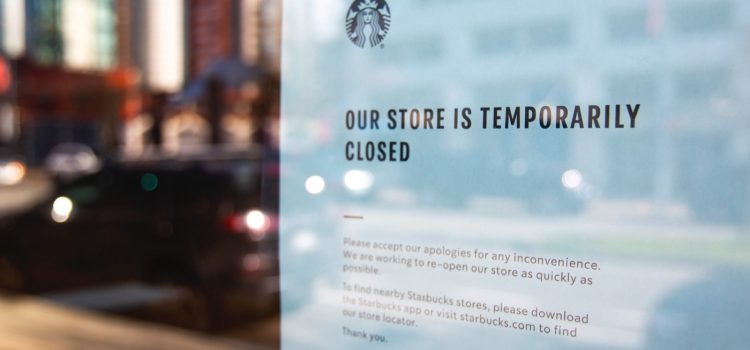

This article is an excerpt from the Shortform book guide to "Onward" by Howard Schultz. Shortform has the world's best summaries and analyses of books you should be reading.
Like this article? Sign up for a free trial here.
What was the Starbucks crisis in 2007 and 2008? What caused Starbucks stocks to drop at a worrying pace during this time?
By the mid-2000s, Starbucks was in a great place as a franchise. However, the decision to focus on rapid growth over in-store experience led to customer complaints, dropping stocks, and slow financial growth.
Continue reading to learn about the factors that led to Starbucks’s downfall.
How Starbucks Fell From Grace
The Starbucks crisis roots back to the focus on franchise-building, led by former CEO Orin Smith. Although Schultz commends Orin Smith’s leadership, he also says that Smith’s focus on expansion by opening new stores domestically and abroad was bad for business. Many of the new locations didn’t operate sustainably, and the cost of opening them overshadowed the profits they brought in. However, opening new stores helped Starbucks appear to be growing, so the next CEO, Jim Donald, continued that strategy. Donald also led Starbucks’ breakthrough into the entertainment industry by developing partnerships with creators and promoting or co-producing their work.
(Shortform note: Starbucks’ failure in Australia illustrates the perils of haphazard international expansion. When Starbucks opened in Australia in 2000, the nation preferred unsweet and inexpensive coffee. Starbucks failed to fulfill this preference, which led them to lose millions and eventually close most Australian locations. Despite this, global expansion remained a growth strategy partially because expansion signals future success to investors, prompting them to pour money into the business. Starbucks’ expansion into entertainment was another growth strategy called diversification, which is risky because offering new products requires a company to reallocate resources and develop new competencies—costs that may not pay off.)
Schultz says he began having doubts about Donald’s leadership because he started hearing more customer complaints. Starbucks was also suffering financially—growth slowed to a snail’s pace and stocks dropped tremendously—a decline that was worsened by the 2007 economic downturn. Schultz didn’t blame Donald because he felt all of Starbucks’ leaders shared responsibility for its performance, but he generally disagreed with the direction the company was headed. In his view, Starbucks’ leaders were failing the company by prioritizing rapid growth over in-store performance, which diminished the distinct coffeehouse experience that made Starbucks valuable to its customers and damaged in-store employee morale.
(Shortform note: In Built to Last, Jim Collins and Jerry Porras explain that successful companies have a core philosophy, or set of guiding values, that keeps them zeroed in on their focus, which in turn sustains stakeholder satisfaction. To withstand changes and challenges, a company (and everyone inside it) must keep sight of its core philosophy at all times. This plausibly explains why Starbucks degraded after Schultz stepped down from his role as CEO: His successors had a different understanding of Starbucks’ core philosophy than Schultz did, so they prioritized growth over its core offering to customers (a distinct coffeehouse experience), leading to a decline in the company’s overall performance.)
| The 2007-2008 Financial Crisis The 2007-2008 financial crisis serves as the economic backdrop to Onward. It put Starbucks in a tough spot, beginning with the 2007 economic downturn, and influenced many of the decisions Schultz would have to make when he returned as CEO. To help you understand the financial position Starbucks was in, here’s some background on the crisis: The financial crisis, also known as the Great Recession, was the worst economic situation suffered by the US since the Great Depression of the 1930s. It stemmed from the collapse of the US housing market bubble (a boom and then a sudden drop in the housing industry), which was fueled by risky lending by major financial institutions. When the bubble burst, these institutions lost money and became wary of lending to one another. In turn, this led to the collapse of major financial institutions once considered “too big to fail” and sparked a worldwide recession marked by widespread unemployment, foreclosures, and government bailouts. Consumer spending decreased and businesses like Starbucks suffered from a corresponding loss of revenue. |

———End of Preview———
Like what you just read? Read the rest of the world's best book summary and analysis of Howard Schultz's "Onward" at Shortform.
Here's what you'll find in our full Onward summary:
- Why Starbucks CEO Howard Schultz left and later returned to the company
- Schultz’s three-part strategy that saved Starbucks from potential ruin
- Why millions of people love Starbucks’ coffeehouse experience






